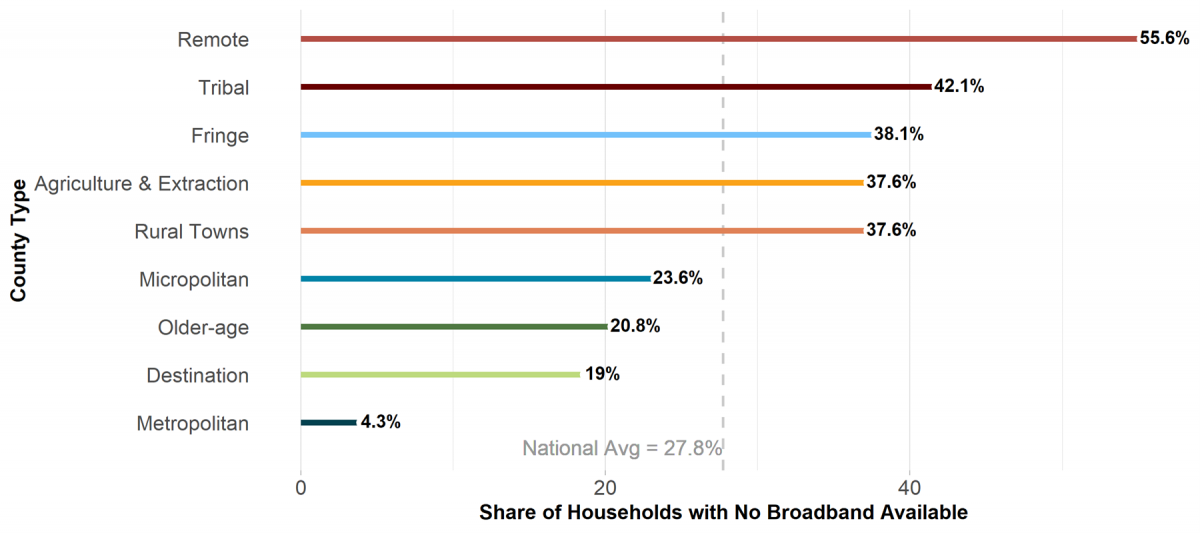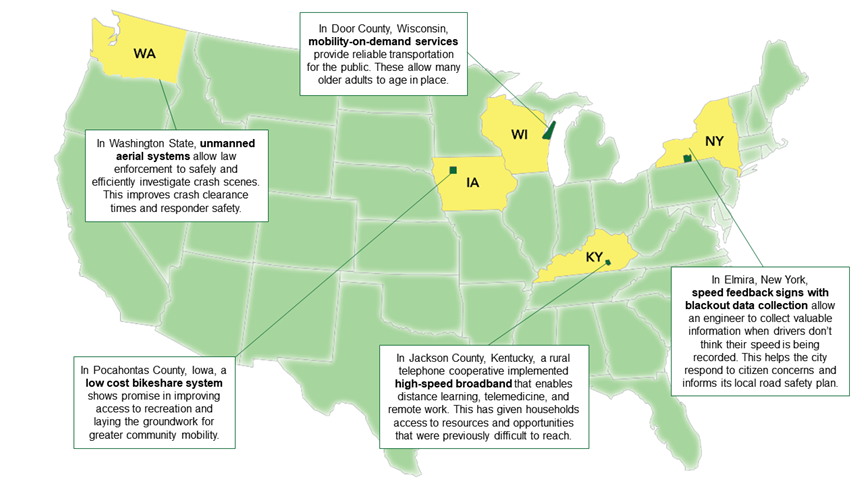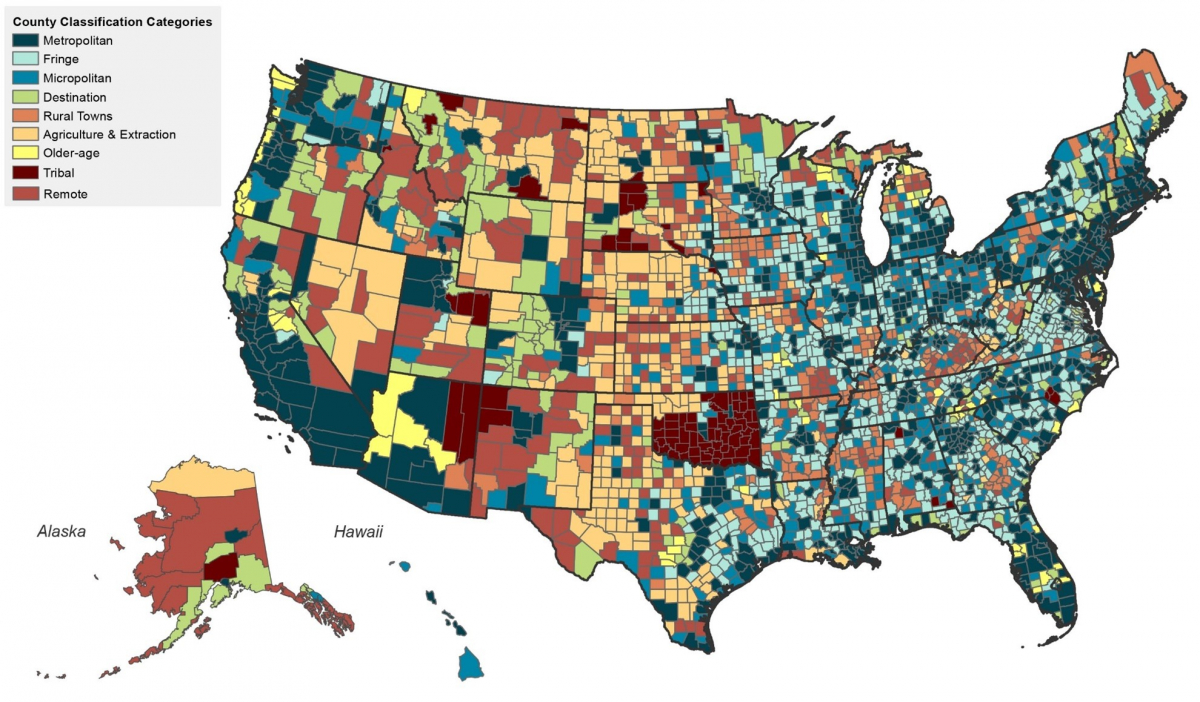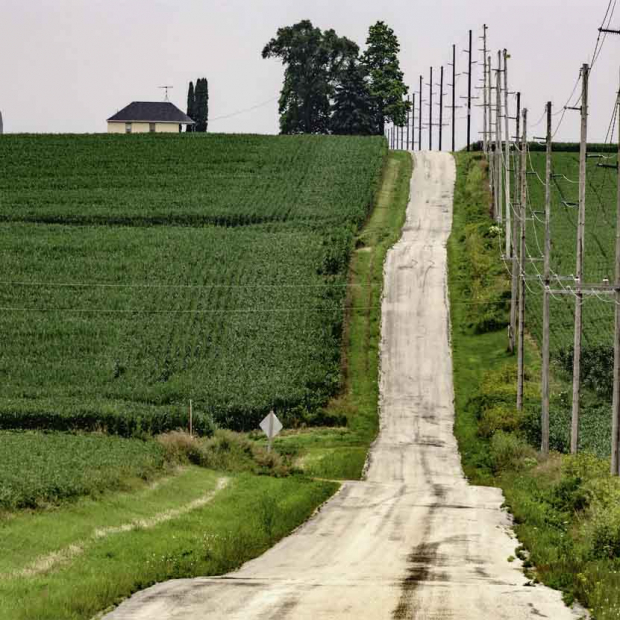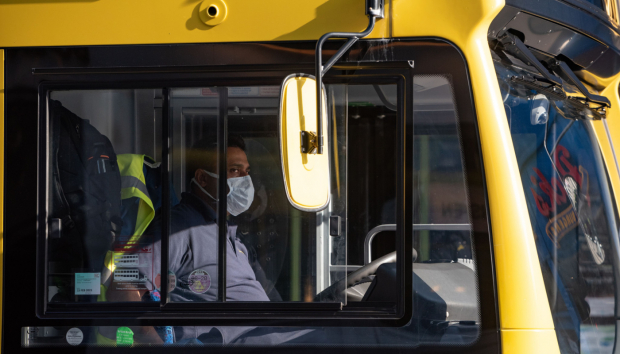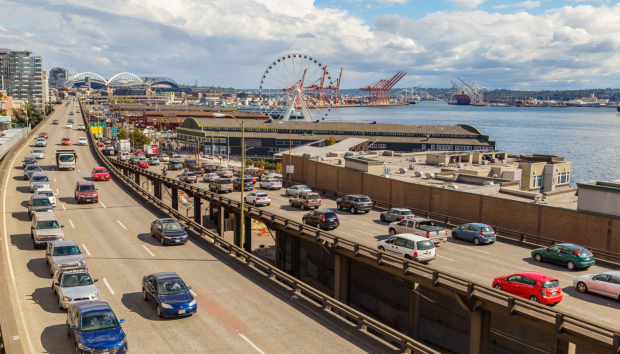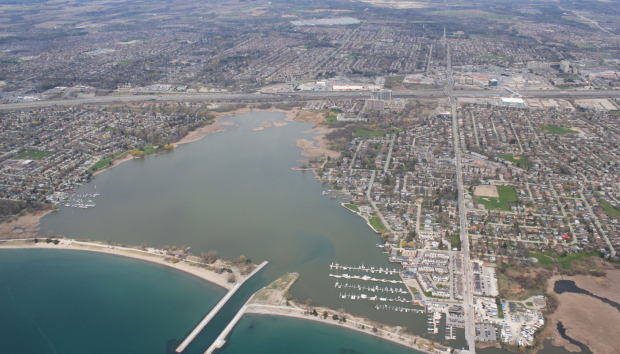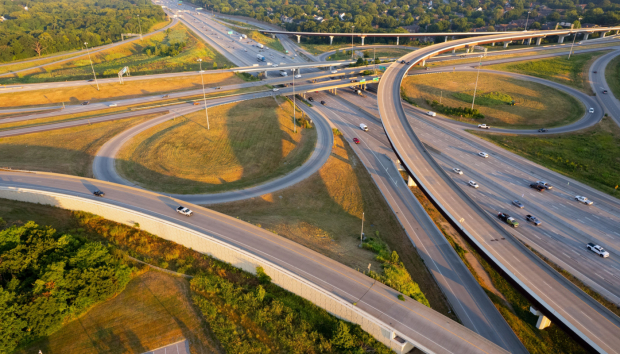

Emerging Technologies and Opportunities for Improved Mobility and Safety in Rural Areas
For the Federal Highway Administration, in collaboration with Cadmus and the Western Transportation Institute, EBP investigated how new transportation options such as shared mobility and connected and automated vehicles (which have primarily evolved in urban/suburban settings) can be leveraged to meet the needs of rural communities.
EBP led an analysis of the relationship among socioeconomics, infrastructure, travel behavior, and safety and mobility outcomes in rural areas. The goal was to better understand the travel needs of rural communities, the cost of current unmet needs, and potential applications of emerging modes and technologies to improve rural mobility and safety.
This study used data analysis, interviews, and case studies to (1) analyze the unique safety and mobility challenges faced by rural America and (2) provide insight into opportunities to leverage technology and new transportation options to turn the unique challenges of rural transportation into opportunities. Eight distinct rural area types were compared to metropolitan areas that have different mobility and safety profiles.
The findings support FHWA and its local partners by providing an improved understanding of rural communities and their unique transportation needs. With this added knowledge, transportation planners and policymakers can create programs that use new technologies to address mobility and safety issues in non-metropolitan areas.
Click here for the final report.
